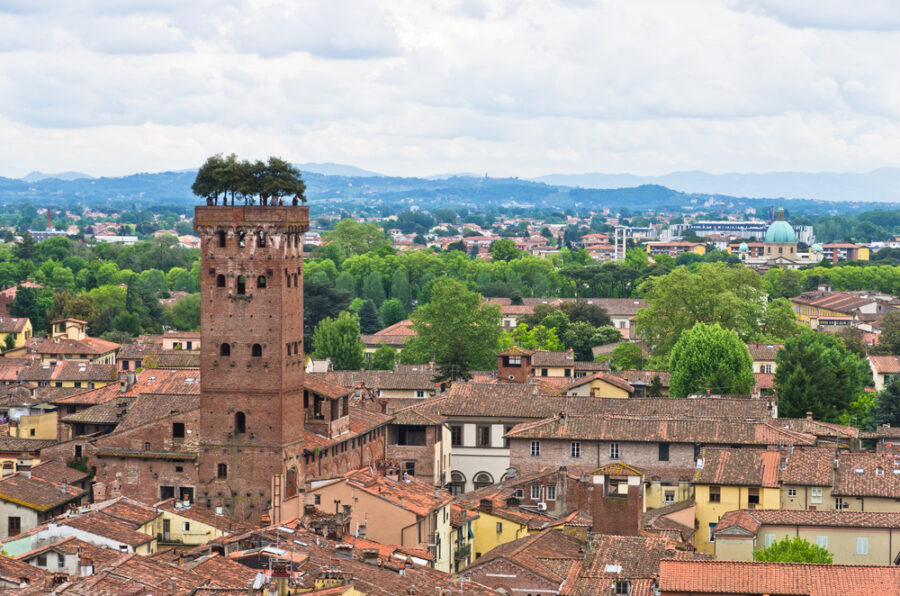
Lucchesia – Where it is located and what it includes
Lucchesia is a historic area of Tuscany. It has no political, economic or geographical significance, but reflects an area united by history, culture and dialect.
The area corresponding to Lucchesia is slightly larger than the Plain of Lucca, as it also includes the surrounding hills and mountains. Specifically, Lucchesia includes the entire municipalities of Lucca, Capannori, Porcari and Villa Basilica and only part of those of Pescaglia, Massarosa, Camaiore, Altopascio and Pescia.
The history of this area dates back to the 7th century BC, when the Etruscans established their first settlements on the river in the mountainous area, followed by the Liguri Apuani, a people who settled here due to the favourable environmental conditions. The area is shaped by the passage of the Serchio River (formerly called Auser), which made the land fertile and therefore attractive for settlement.
What remains today of these past times is history, but more concretely, there are actual artefacts from all the populations that have lived in the area, with a particular concentration of artefacts from the medieval period.
The beauty of this area derives from its geographical and cultural heritage. You can find wonderful flat expanses dotted with ancient villas and historical artefacts to explore, learn about and visit.
What to see in the Lucchesia area
There are many historical and natural attractions in this area, including:
• The river park
A wonderful walking and cycling route will take you from the Monte S. Quirico bridge to the S. Pietro bridge, passing over the banks dating back to the 19th century.
Along this route, you can appreciate the local flora and enjoy a picnic on one of the small beaches you will encounter. If you happen to be in the area during the summer, you can also take a swim.
• The historic aqueduct
The city gives way to meadows and an imposing historic aqueduct that still brings water from the mountains to the city.
Thanks to this aqueduct, dozens of fountains remain active within the walls and provide excellent mineral water.
• The hills of Lucca
Wonderful gardens await you on a walk through these hills. There are many luxurious villas built over five centuries starting in the 13th century.
This visit will leave you feeling relaxed (and a little envious).
These are just some of the wonders that can be found outside the city, not to mention all the villages that undoubtedly harbour an immense food and wine heritage.
It is impossible to understand what I am talking about without visiting this area.
…And what is there in Lucca?
Lucca is also part of this area, and it is only right to talk about what there is to do within the walls.
Inside the walls, we find a real city that pulsates and thrives on tourism and culture. Art, music and entertainment spread through the streets of the city, leaving all those lucky enough to visit it ecstatic.
The best thing to do to enjoy the city is to walk until you get lost, as this is the only way to truly experience the glimpses of Lucca that only those who know it can enjoy.
Needless to say, the walls themselves that enclose the city are a sight that is not common to any other Italian city.
Finally, let’s see what are the highlights that must be seen in Lucca:
• Piazza dell’Anfiteatro
A square dating back to the first half of the 19th century, it is said to be one of the most beautiful in Italy, and it is not hard to believe.
• The Duomo
A visit to the Duomo is a must. This imposing structure will leave you speechless.
• The two remaining towers
Lucca once had 250 towers, but now only two remain: the Torre delle Ore and the Torre Giunigi, a sight not to be missed.
